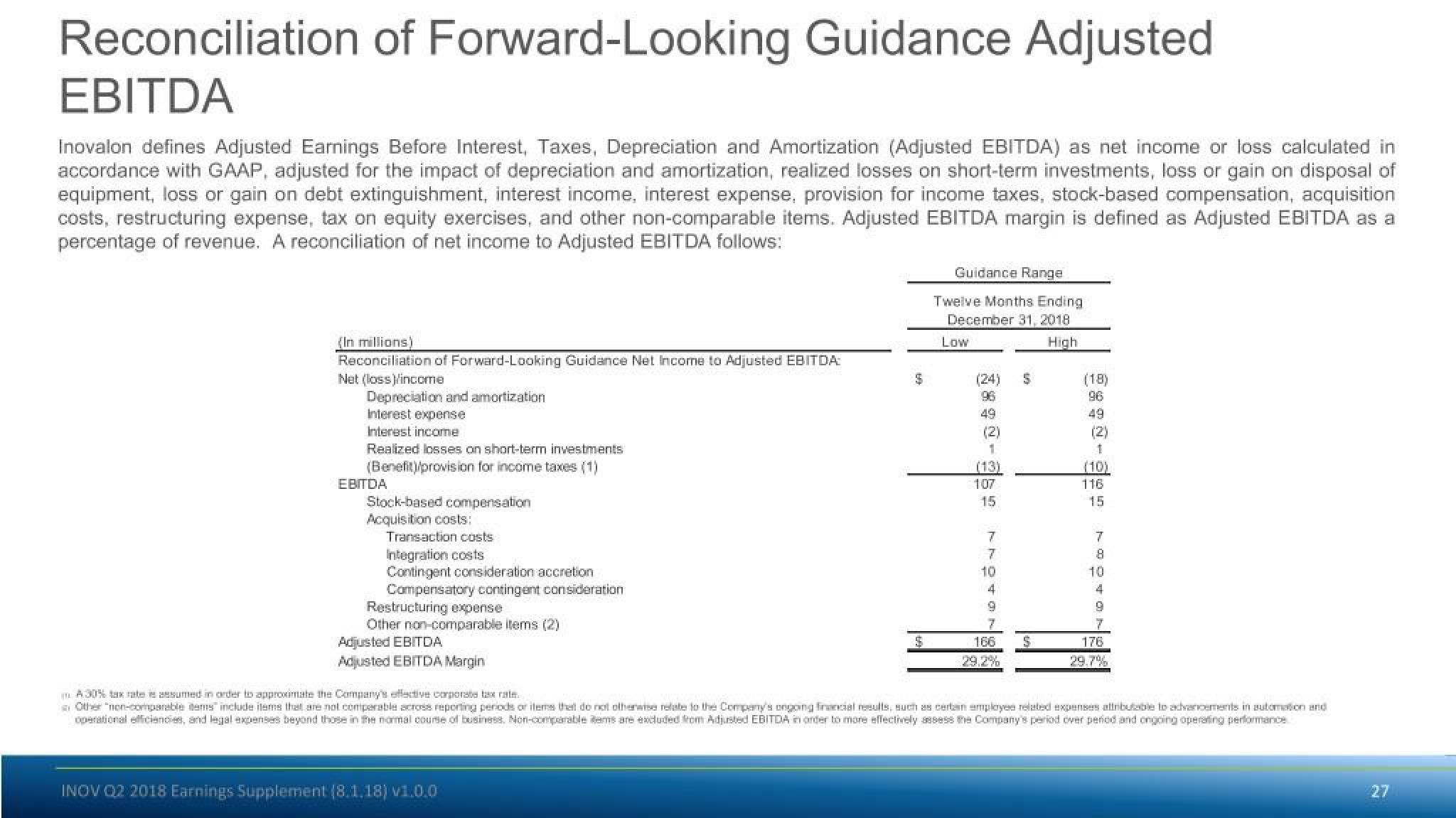Inovalon Results Presentation Deck
Reconciliation of Forward-Looking Guidance Adjusted
EBITDA
Inovalon defines Adjusted Earnings Before Interest, Taxes, Depreciation and Amortization (Adjusted EBITDA) as net income or loss calculated in
accordance with GAAP, adjusted for the impact of depreciation and amortization, realized losses on short-term investments, loss or gain on disposal of
equipment, loss or gain on debt extinguishment, interest income, interest expense, provision for income taxes, stock-based compensation, acquisition
costs, restructuring expense, tax on equity exercises, and other non-comparable items. Adjusted EBITDA margin is defined as Adjusted EBITDA as a
percentage of revenue. A reconciliation of net income to Adjusted EBITDA follows:
(In millions)
Reconciliation of Forward-Looking Guidance Net Income to Adjusted EBITDA:
Net (loss)/income
Depreciation and amortization
Interest expense
Interest income
Realized losses on short-term investments
(Benefit)/provision for income taxes (1)
EBITDA
Stock-based compensation
Acquisition costs:
Transaction costs
Integration costs
Contingent consideration accretion
Compensatory contingent consideration
Restructuring expense
Other non-comparable items (2)
Adjusted EBITDA
Adjusted EBITDA Margin
$
INOV Q2 2018 Earnings Supplement (8.1.18) v1.0.0
Guidance Range
Twelve Months Ending
December 31, 2018
High
Low
(24)
49
(2)
1
(13)
107
15
7
7
10
4
9
166
S
(18)
96
(2)
1
(10)
116
15
7
8
10
4
9
176
29.7%
in A 30% tax rate e assumed in order to approximate the Company's effective corporate tax rate.
Other "non-comparable items include items that are not comparable across reporting periods or items that do not otherwise relate to the Company's ongoing financial results, such as certain employee related expenses alinbutable to advancements in automation and
operational efficiencies, and legal expenses beyond those in the normal course of business. Non-comparable items are excluded from Adjusted EBITDA in order to more effectively assess the Company's period over period and ongoing operating performance
27View entire presentation